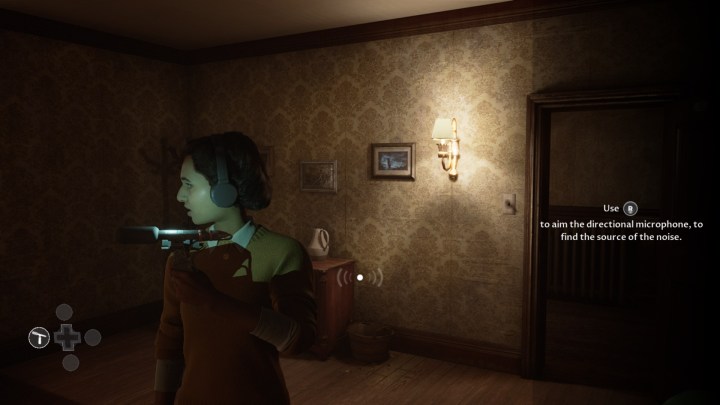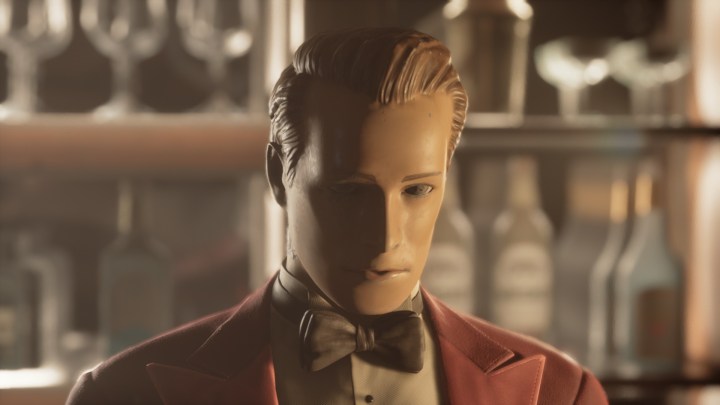Each new entry in Supermassive Games’ and Bandai Namco’s The Dark Pictures Anthology is incrementally better than the last. Last year’s House of Ashes was the most enjoyable entry I’ve played thus far, as the game had noticeably improved lore and cast of characters. While it would have sufficed to tell another good story in The Devil in Me, Supermassive added one extra twist that makes the upcoming Dark Pictures entry much more engaging than the ones before.
Having played two hours of The Devil in Me, the standout feature is that characters can now move objects around in the environment and pick up tools. In previous games, this was mostly limited to just picking up collectibles and opening up doors. Moving around objects and picking up tools seem like inconsequential features since they’re pretty standard in most horror games, but their inclusion in this game feels like a big step forward for the series, adding a new dimension of horror.
New cast, new tricks
The Devil in Me follows five characters who are part of a documentary film company called Lonnit Entertainment. The crew is shooting the season finale of their documentary series that focuses on the serial killer H.H. Holmes. Coincidentally, the crew gets invited to a modern-day replica of the killer’s “Murder Castle” hotel.
The preview started with me controlling Charlie, Lonnit’s CEO. With him is Erin, an intern and sound engineer. Unfortunately, Erin lost Charlie’s cigarettes, so they venture farther into the hotel to find some. What’s particularly interesting about the five characters is that they all have unique abilities in the form of tools related to their specific profession. For example, Charlie, as the CEO, often has business cards on him. He can open up locked drawers by using his business cards as a makeshift lockpick. And Mark Nestor, the cameraman, can grab items from higher-up places using his camera stand.

The implementation makes each character feel more distinguishable from the others, which is important because Supermassive reuses character likenesses and models from previous entries here. Mark’s face, for example, was used in Man of Medan for one of the game’s antagonists.
However, one tool stood out to me above the others, and that was Erin’s microphone. As the sound engineer, she comes equipped with a pair of headphones and a microphone that allows her to pick up noises. When I took control of her character, the hallways were dimly lit, and I was forced to rely on sound in order to navigate around. I heard someone scream, and the sound icon in the middle of the screen would fill up more as I got closer to the source.
This particular section with Erin had me dreading what was around the corner every time I turned. It ended with her being locked in a room, and with her having asthma, she began experiencing an attack. As the rest of the crew tried to get her out, a mysterious person wearing a mask appeared in the room with her, even offering her an inhaler. I was given the option to either attack them or grab the inhaler. I chose the latter, and the mystery person grabbed Erin and put a knife to her head. But he didn’t harm her and seemingly only cut off a piece of her hair.
What followed was another interesting wrinkle of the new tool system. I noticed the number 5 was attached to the inhaler, and it decreased by one as Erin used it to calm herself down — indicating that some items have limited uses. This inclusion required me to be tactful about the choices I make: I should probably avoid situations that potentially put Erin in harm’s way. Presumably, if the number of inhaler uses runs out, Erin could permanently die in my playthrough.
More interactions
With the new interactive elements, characters can now push items like carts around in their surroundings. Mark’s section in the preview demonstrated this mechanic the most. In a library-looking area, I pushed a big shelf into a gap that allowed me to cross over to the other side. It was reminiscent of the Resident Evil 2 remake’s library section with a similar puzzle.

While these puzzles aren’t very challenging, what makes them frustrating is that sometimes it can be hard to see what you’re able to interact with. It wasn’t entirely clear to me that I was able to move that aforementioned shelf. I had an inkling that I could, but even standing directly in front of it, no button prompt showed up. So I walked around the area for five minutes, confused about how to progress. It wasn’t until I walked passed the shelf again that the prompt showed up — even though I was only a little farther away from the shelf than I was before.
Dark Pictures Anthology games have a good amount of accessibility options, including allowing players to hold down certain buttons to pass quick time events rather than repeatedly tapping them, or giving players additional time to make split-section decisions. All of those options are back in The Devil in Me, but it looks like there weren’t any additional accessibility options designed around the new interactive elements.
As laid out in the early impressions of God of War Ragnarok, I was able to apply high-contrast filters to interactive objects in my surroundings. If I got stuck on a puzzle, I was able to more easily figure out how to progress. I would’ve loved to have something similar to that for The Devil in Me so I wouldn’t be left wandering aimlessly trying to figure out exactly what to do next.
We hate Charlie
So far, though, The Devil in Me has me intrigued. It’s definitely much more grounded than previous entries, though it still has some mystical elements too. Animatronics seem to play a big role in this one, as there’s a bar area with a creepy bartender animatronic that lingered over Charlie as he was searching for a pack of cigarettes. At the beginning of Charlie’s section, an exact replica of his hat can be found hanging on a rack, and then in a later cutscene, a mysterious figure can be seen placing that hat on an animatronic that looks eerily similar to him.

I’m interested to see how the H.H. Holmes-inspired setting turns out, as well as discover who the mysterious person is and their motivations. I do hope that the full game tones down the cheap jump scares, as I experienced about five of them during the preview. Oh, and as an aside: I’ve already had it with Charlie, as he incessantly whines about not having his smokes. The rest of the cast agrees with me too since they call him out for acting like a baby and having temper tantrums. He’s also the only one in the crew who dismisses the creepy occurrences going around at the hotel while everyone else is spooked and wants to find a way out.
I look forward to killing him off on purpose during my playthrough when The Dark Pictures Anthology: The Devil in Me launches November 18 for PC, PS4, PS5, Xbox One, and Xbox Series X/S.



